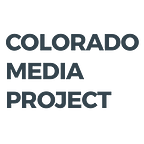Potential Funding Sources
In this paper we put forth several ideas to strengthen and reinvest in local news and journalism throughout Colorado. Some ideas, such as improving the collection and publication of state government information, could be accomplished by redirecting existing funds. Others, such as the creation of local special information districts, would rely on funding approved at the local level. Revenues generated from each of these efforts could be used to attract additional private funds.
But to fully implement the ideas put forth will require new funding from the state. Several analysts and advocates have suggested using tax policy as a way of promoting the sustainability of local news and journalism. Craig Aaron with Free Press recommends levying a 2% federal tax on digital ads sold by online platforms to fund an endowment to support local news and journalism. Part of the funds generated could be distributed to the states through a formula and used to support local news and journalism.
While the federal level would be an appropriate point to implement such a tax, if this happens we believe that a majority of revenues should be distributed to the states based on the volume of digital ads directed to each state.
However, if the federal government does not act, Colorado could extend its state sales tax to include digital ads that are directed at Coloradans. This approach is similar to a proposal put forth by Paul Romer, a Nobel Prize-winning economist who suggested that states could levy a progressive sales tax on the revenues online platforms earn from the digital ads shown to their residents.
Colorado currently levies a 2.9% state sales tax primarily on tangible goods based on the sale prices paid at retail. Colorado taxes fewer services than most states and over the past 50 years services have accounted for a greater share of consumer spending than tangible goods. Colorado currently provides a rebate to businesses that collect sales taxes that is structured so that smaller business receive a larger proportion of the sales taxes they collect than do the larger businesses, making this process somewhat progressive.
Extending Colorado’s 2.9% state sales tax to digital ads that are targeted at Coloradans would modernize the state’s sales tax system by tying it more closely to the growth in digital services while generating additional revenue to address the consequences these changes have had on local news and journalism.
The value of digital ad revenue nationwide was estimated to total $108.6 billion in 2018, growing to $129.3 billion in 2019. However, there are no readily available estimates for revenue generated from digital ads shown to Coloradans. To estimate Colorado’s share of the U.S. digital ad sales, we used Colorado’s share of households with broadband connections as a proxy measure.
According to the U.S. Census Bureau, Colorado has 1.8 million households with broadband connections representing 1.9% of the 97 million households in the U.S. with a broadband connection. Based on this share, we estimate that Colorado would account for 1.9% of the total digital ad sales in the U.S., or $2.0 billion in 2018 and $2.4 billion in 2019. Extending our 2.9% state sales tax to this share of digital ads would have generated an estimated $58.9 million in 2018 and $70.1 million in 2019.
We recognize that this is a rough approximation of the value of digital ads shown to Coloradans and that more detailed analyses need to be undertaken to more accurately determine their value as this proposal moves forward.
The revenues generated by expanding Colorado’s state sales tax to digital ads could be used to fund most of the ideas in this paper. It could support the state-level public-private partnership to stimulate local news and journalism and the tax credit for donations to local news outlets described earlier in the report. It could also be used to fund higher education resources such as internships and fellowships and to expand library services to support local news gathering and publication. There may also be revenue available to support the expansion of broadband services in rural areas that currently lack these connections. These are the types of areas that are also most likely to be news deserts.
This proposal is structured as a tax policy change aimed at improving the sales tax system and linking revenue to promote local news and journalism to the growth in digital advertising, one of the structural changes threatening its business model. The revenue gain is incidental to modernization of the sales tax system. Therefore, we believe this proposal could be considered a tax policy change under TABOR that would not require a vote of the people to be enacted.
